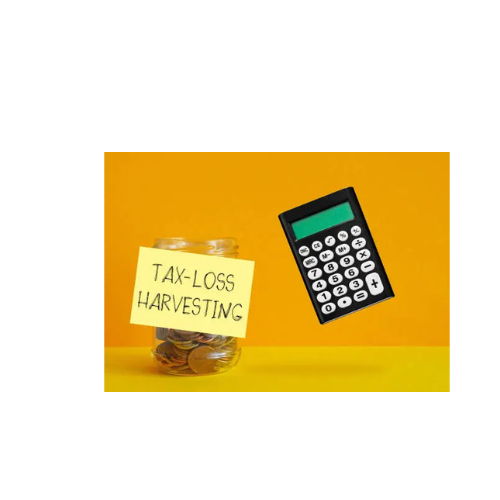How to Use Tax-Loss Harvesting in Your Investment Strategy
Tax-loss harvesting is a powerful yet often underutilized strategy that can help investors reduce their tax liabilities while maintaining their long-term investment goals. By strategically selling underperforming investments, you can offset gains, minimize taxes, and even improve your portfolio’s overall efficiency.
In my experience, tax-loss harvesting is one of the most effective ways to optimize returns without taking on additional risk. However, it requires careful planning to ensure compliance with IRS rules and alignment with your financial objectives.
By the end of this article, you’ll understand:
• Practical steps to incorporate tax-loss harvesting into your investment strategy.
Why Listen to Me?
As a CERTIFIED FINANCIAL PLANNER™ professional, I’ve guided clients through the complexities of tax-loss harvesting for years. Investors I’ve worked with often express relief when they see how this strategy can turn market downturns into opportunities for tax savings.
👉 How would it feel to know exactly when you can retire and how much you can spend without running out of money? Let’s talk. In a complimentary call, I’ll walk you through your numbers and show you strategies that could help you retire with more confidence and less stress. Schedule Your Call
Key Takeaways
- Tax-loss harvesting involves selling investments at a loss to offset taxable gains or reduce your taxable income.
- The strategy works best in taxable accounts, as tax-advantaged accounts like IRAs and 401(k)s don’t benefit.
- Avoid the wash-sale rule by waiting at least 30 days before repurchasing the same or a substantially identical investment.
What Is Tax-Loss Harvesting?
• Your net taxable gain is reduced to $2,000, lowering your tax liability.

Short-Term vs. Long-Term Gains
Tax-loss harvesting applies to both short-term and long-term capital gains, but the benefits differ:
• Long-Term Losses: Offset gains taxed at lower capital gains rates.
If losses exceed gains, you can use up to $3,000 per year to reduce ordinary income and carry forward any remaining losses to future years.
Rules to Know
The Wash-Sale Rule
In my experience, the wash-sale rule is the most common pitfall for investors attempting tax-loss harvesting. This rule prohibits you from repurchasing the same or a “substantially identical” investment within 30 days before or after the sale.
How to Avoid It:
• Replace the sold investment with a similar but not identical asset. For example, sell one S&P 500 index fund and buy another fund that tracks a similar but not identical index.
Limits on Deductions
• If your losses exceed your gains, you can deduct up to $3,000 against your ordinary income.
When Should You Use Tax-Loss Harvesting?
- Tax-loss harvesting is often most effective at year-end when you have a clear picture of your total capital gains and losses for the year.
- In my experience, market corrections provide opportunities to harvest losses while staying invested. By reinvesting in similar assets, you can maintain your portfolio’s exposure without violating the wash-sale rule.
- Regular portfolio reviews often reveal underperforming assets that may no longer align with your goals. Selling these investments can create tax savings and improve portfolio performance.

How to Implement Tax-Loss Harvesting
Step 1: Identify Losses
Review your taxable accounts to identify investments with unrealized losses.
Step 2: Match Gains and Losses
Pair losses with gains to reduce your overall tax liability.
Step 3: Reinvest Strategically
Replace sold investments with similar assets to maintain your portfolio’s diversification and alignment with your goals.
Benefits and Drawbacks
Benefits
• Can create future tax savings by carrying forward unused losses.
Drawbacks
• Timing: Requires monitoring markets and portfolio performance.
Advanced Strategies
In years of lower income, consider harvesting gains alongside losses to take advantage of lower tax rates.
Many robo-advisors and portfolio management platforms offer automated tax-loss harvesting, which can simplify the process and ensure compliance with IRS rules.
Using losses to offset up to $3,000 of ordinary income can provide additional savings, particularly for high earners.
Common Misconceptions About Tax-Loss Harvesting
Tax-loss harvesting benefits anyone with taxable investments, regardless of account size.
The wash-sale rule prevents this. In my experience, choosing similar but not identical investments ensures compliance while maintaining your portfolio’s strategy.
While it requires planning, tax-loss harvesting can result in significant savings over time, especially for investors in higher tax brackets.
FAQs About Tax-Loss Harvesting
1. Can I Use Tax-Loss Harvesting in My IRA?
- No. Tax-loss harvesting applies only to taxable accounts, as gains and losses within tax-advantaged accounts like IRAs are not taxed.
2. How Much Can I Deduct?
- You can deduct up to $3,000 of net losses against ordinary income annually, with the remainder carried forward to future years.
3. Does It Make Sense in a Low-Income Year?
- Yes. Even in low-income years, harvesting losses can reduce your taxable income or offset future gains.
Conclusion
Tax-loss harvesting is a valuable tool for reducing your tax liability and improving your portfolio’s efficiency. By understanding the rules, timing your trades strategically, and reinvesting wisely, you can turn market volatility into a long-term advantage.
👉How would it feel to know exactly when you can retire and how much you can spend without running out of money? Kind of crazy that you just found this blog… and your next step might be booking a complimentary call. In that call, we’ll explore your numbers and see what’s truly possible for you. Schedule Your Call
Sources:
[1] https://www.fidelity.com/viewpoints/personal-finance/tax-loss-harvesting
[2] https://www.investopedia.com/articles/taxes/08/tax-loss-harvesting.asp
[4] https://www.reddit.com/r/investing/comments/1gpmq17/how_to_strategically_think_about_taxloss/
[5] https://www.schwab.com/learn/story/how-to-cut-your-tax-bill-with-tax-loss-harvesting
[7] https://www.firstcitizens.com/wealth/insights/tax-planning/tax-loss-harvesting
[8] https://am.gs.com/en-us/institutions/campaign/tax-loss-harvesting-strategies-how-they-work
Disclaimer: Case studies are hypothetical and do not relate to an actual client of Lock Wealth Management. Clients or potential clients should not interpret any part of the content as a guarantee of achieving similar results or satisfaction if they engage Lock Wealth Management for investment advisory services.
